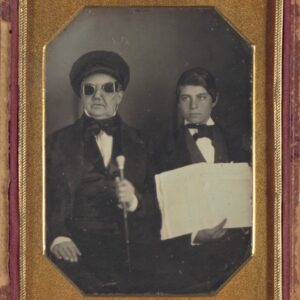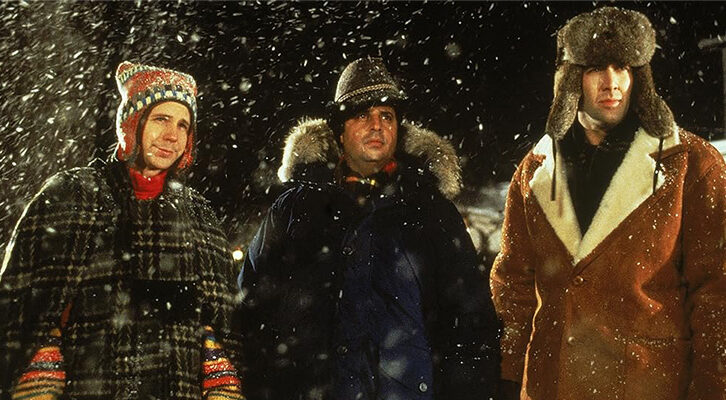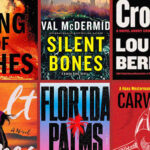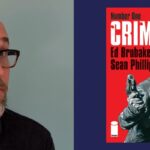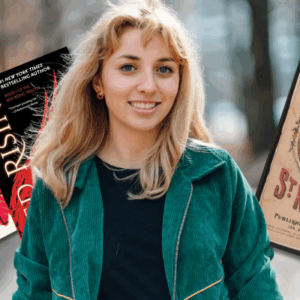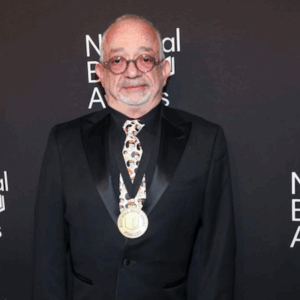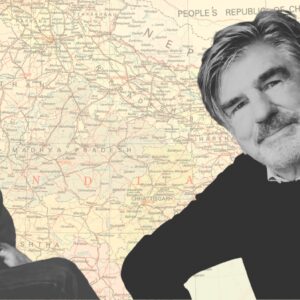
Michelle Huneven on Writing a Polyphonic, Decade-Spanning Family Saga
Jane Ciabattari Talks to the Author of “Bug Hollow”
Michelle Huneven’s captivating new novel, her sixth, is a wonder, a California-based family drama that builds a masterful collage of character and connection. Bug Hollow is set in Altadena, where Huneven was born and raised and lived until she went away to college, ultimately ending up with an MFA from the Iowa Writers’ Workshop. In 2001 she bought a house a mile due east of her childhood home and moved in the day before 9/11. Three years later, her husband-to-be bought the house next door, which they rented out. Altadena was at the center of one of January’s wild firestorms. At the beginning of our email conversation, which spanned the coast, from Sonoma County to Southern California, I asked how her life and work were affected by the wildfires.
“Our house and the rental were both lost in the Eaton fire,” she explained. “I’d lived through so many wildfires in the nearby mountains and not one had ever come down into the neighborhoods, so we evacuated with only the bare minimum. I followed an evacuation guide in the LA Times—pets, jewelry, important papers, prescriptions, and three days’ worth of clothes—certain we’d be home the next day. We lost everything, including all my books and archives and notes. All I’ve been able to pull from the rubble are a few knickknacks. We did rescue two of formerly five goldfish in our pond. It was a brutal fire. Luckily, Bug Hollow was already in galleys by then!”
You lost everything? How are you managing? “After the fire we were met by a deluge of kindness and generosity. Friends offered a rarely used home, which gave us time to surface. We then rented a house in the Echo Park neighborhood of Los Angeles—I haven’t moved with fewer possessions since my first apartment after grad school. Friends threw us a housewarming party to equip our new kitchen. People, some of them strangers, gave us furniture. Stores offered fire survivors generous discounts. We are lucky in that our insurance company came through for us. I am acutely aware, however, that many are struggling. I met a neighbor at a soil testing event last Sunday who has lived in five different hotels since her house burned down.
What next? “The road ahead seems long. We plan to rebuild and are ready to start construction on a small home as soon as the debris removal process concludes—although rebuilding our beloved home in a devastated hellscape is not how we’d planned to spend the next five years. That said, many of my roses survived and have been blooming like crazy. We’re enjoying our temporary new digs; we’re a two-minute walk from Elysian Park and within cheering distance of Dodger Stadium. I’d say we’re optimistic, grateful, and very sad all at the same time.”
*
Jane Ciabattari: Back to Bug Hollow. Your opening section introduces members of the Samuelson family—Sally Samuelson, who is eight in your opening scenes, her older sister Katie, her older brother Ellis, mother Sibyl, and father Phil. Later the narrative point of view includes some characters who have more or less intimate encounters with one or more Samuelson. At what point did you decide to make this a polyphonic novel?
I liked how this refractory structure allowed great time swerves and afforded oblique glimpses of the different family members.
Michelle Huneven: I’m not sure there was a decision. I started out writing a series of stories—each one generated a question or an idea for another. For example, after my trusted reader Mona Simpson (whose most recent novel was Commitment) read Bug Hollow as a freestanding story, she said, “I’d like to know what happened to the girlfriend.” I took that as a prompt to write Julia, at 20, about the girlfriend deciding what to do about her accidental pregnancy. Next, Mona wanted to know more about the mother, which became The Teacher section. At a certain point, it became clear that, in spite of myself, I was writing a novel, which released me from trying to make each section stand on its own as a story. Comments and questions from readers continued to inspire new sections. Thus, a minor character in one section—such as the Sib’s boss and mentor, Mrs. Wright—could become the central character in another. I liked how this refractory structure allowed great time swerves and afforded oblique glimpses of the different family members.
JC: In that first section, Ellis drives north to Santa Cruz the summer he turns eighteen, goes “off the grid,” and checks in with the family only a few times. He’s met Julia, who becomes his girlfriend, and ever more important as the narrative progresses. This adventure becomes the prelude to a tragedy that will resonate through the rest of the novel. What was the seed for this dramatic moment?
MH: Bug Hollow, the opening section, was a story I first drafted in response to a prompt I gave my writing students at UCLA six or seven years ago: Write about a sibling you never had. I don’t often write to the prompts I assign, but this one ignited my imagination. I’d never had a brother and in conjuring one, I remembered my mother saying if I’d been a boy, she would have named me Ellis after her beloved youngest uncle who had drowned. So, I named my fictional brother Ellis and gave him to a fictionalized family similar—only superficially similar—to my own, consisting of a mom and dad and two girls. I had him go on a camping trip with friends, then not come back. His parents and sisters fret and worry until they finally locate him. Then, the whole family heads north to bring him home. I’d gotten that far, then the draft floated around on my desktop for years.
After I published my last novel, Search, I wasn’t quite ready to embark on another big project, so I decided to write stories. I dusted off the Bug Hollow draft and did what I’d been avoiding in order to finish it. I drowned the boy.
JC: How did you settle on the title, which refers to the shingled house in the woods of Boulder Creek where Ellis finds a communal home for the summer?
MH: I took a year off in the middle of college to live on a farm in North Carolina where a nearby commune was called Tick Creek. I suppose Bug Hollow is a riff on that name. To me, the story and then the novel always had that title.
JC: You write with great sensitivity about Eva, who is Ellis’s child with Julia, raised as an added sibling by the Samuelsons. Her closeness to Sally, in age and temperament, as the years go by is particularly touching. The question of unexpected children (Eva is not the only surprise Samuelson) becomes a theme. Did you have that in mind from the beginning?
MH: I knew from early, discarded drafts of the story Bug Hollow that Ellis left his girlfriend pregnant. As I often tell my students, we humans are patterning creatures. Having created one surprise child in the first half of the book, I went on to create second surprise child in the second—a kind of balancing, I suppose, but largely unconscious. I do like how the two kids form a sort of interim generation of Samuelsons: when Eva meets her new half-brother and his wife she says, “Finally, people my own age in the family!”
JC: About a third of the way through the book, the scene shifts to Ojai, and the point of view of Yvette, who runs into Phil Samuelson at a boarding school which both are considering for their youngest kids. It’s a random meeting, but you signal there is history here in her reaction: “He had short, curly salt-and-pepper hair, a good tan, and kind brown eyes. Her body recognized him first: Phil Samuelson, fifteen years older. A person she’d never expected to see again.” You set her back story next, telling of her husband Claude, how they met, and his taking an architectural contract to design and build a skyscraper in Al Khobar, Saudi Arabia, where she first met Phil. What was the seed for this element of the plot?
MH: When I told my friend, the novelist Lily Tuck, I was writing about a family in Altadena, I mentioned that the dad was an engineer who sometimes worked in Saudi Arabia. Lily instantly said: “He should have an affair in Saudi Arabia.” Now that was a prompt I resisted: Phil Samuelson was a gentle, committed family man of the sort least likely to cheat. Plus, I knew absolutely nothing about Saudi Arabia. In spite of myself, the idea took hold and six weeks later, I had a draft of Fresh Water in the Sea.
JC: How did you do the research for the scenes set in Saudi? The building projects there?
MH: I read about Aramco’s (the Arabian American Company) communities for Westerners—I read old issues of the Aramco World, a general interest magazine meant for Aramco employees and their families. I read firsthand accounts of people who worked for Aramco and/ or grew up in one of their compounds. A friend put me in touch with the writer Kai Bird, who had briefly lived in Dharan as a kid. For weeks, I was deep in research rapture and bored my husband and friends silly talking about Saudi Arabian history and politics.
As I often tell my students, we humans are patterning creatures.
JC: In the section called “The Teacher,” told from Sibyl’s point of view, she describes going to graduate school after Sally enters kindergarten and starting a teaching career. Her frustration with the housewife role is quite clear, and a clear contrast to her empathy for and patience with one of her fourth-grade students, Sandro, an “elective mute,” who is the youngest of six children in a family from Argentina. Sibyl’s later choices—her drinking, her carelessness with her own health—also mirror an ambivalence. How did you develop her complicated character?
MH: I write long dossiers about my characters, usually by hand on yellow legal pads so that I’m not tempted to edit as I would on a computer. I keep asking myself questions about a character until I know a great deal about them. For example, I knew that Sibyl grew up with only brothers, so was at a loss in relating to her daughters. Also, as Sandro is in her class the year she lost Ellis; she is driven to help him as she couldn’t help Ellis. Sibyl knows that she’s a better teacher than a mother—as she says, parent are amateurs while teachers are professionals. Her drinking and her self-neglect—not going to the doctor when she feels a lump—stem from fear. Life, with its awful surprises, has terrorized her. And she’s basically, permanently inconsolable. Keeping very busy and a little drunk, avoiding feelings and intimacy and what could be very bad health news is how she manages her life.
JC: Your sensual details about place, food, clothing, cars, objects, are fascinating. How did you set about incorporating the cultural shifts in these details in the decades you cover?
MH: I strive for accuracy. For example, I would have liked to have had JP find his bio dad sooner, but I saw that DNA testing only became remotely affordable around 2008. That’s not to say, I always get things right! Bug Hollow was already in galleys when I woke up one night and thought, I have Yvette going to St. Paul’s boarding school in the late 60’s—but were they accepting girls then? I checked: nope! Luckily, I could change her school in time for the finished book. And thank God for the fact checkers and eagle-eyed readers who have saved me from other such missteps.
JC: What are you working on now/next? Are you considering a sequel to Bug Hollow?
MH:To tell the truth, I haven’t been working on much since the fire. I had been working on a novel about the eugenicist who lived on my Altadena property, and on a young adult novel about a girl who takes over the kitchen from her mother. But I lost all my research notes and handwritten drafts in the fire and haven’t had the juice to go back to either project. Meanwhile, we’ve had to equip a new home from scratch. I have a lovely office now, but we are still sleeping on a mattress on the floor while awaiting the bed we ordered in February to arrive. We are lucky—friends have been enormously generous along the way. Still, it has been hard to settle into anything, as on many days some post-fire-related business intrudes, from insurance and loan issues to architectural and permitting issues, plus getting the water running again, not to mention monitoring debris removal, dead tree removal, and soil testing on both properties. We’re getting ready to start construction any day now. Plus, I’ve been teaching at UCLA.
I do sense something brewing, but I’m not yet sure what it is.
__________________________________
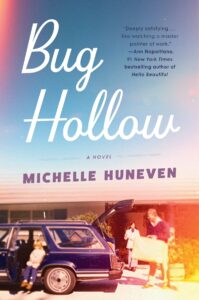
Bug Hollow by Michelle Huneven is available from Penguin Press, an imprint of Penguin Publishing Group, a division of Penguin Random House, LLC.
Jane Ciabattari
Jane Ciabattari, author of the short story collection Stealing the Fire, is a former National Book Critics Circle president (and current NBCC vice president/events), and a member of the Writers Grotto. Her reviews, interviews and cultural criticism have appeared in NPR, BBC Culture, the New York Times Book Review, the Guardian, Bookforum, Paris Review, the Washington Post, Boston Globe, and the Los Angeles Times, among other publications.









